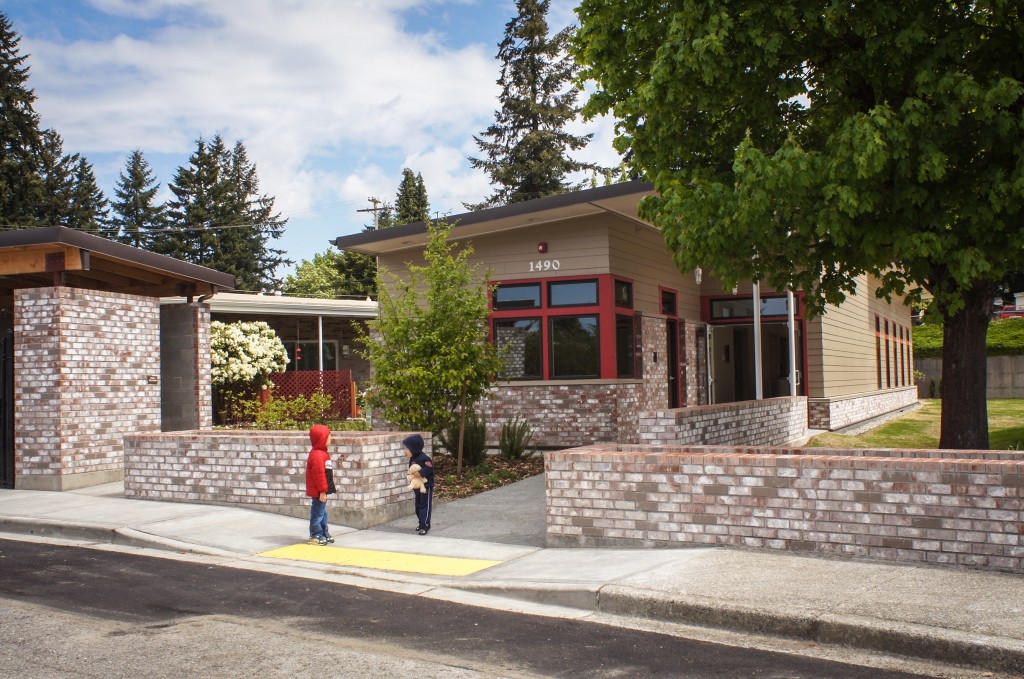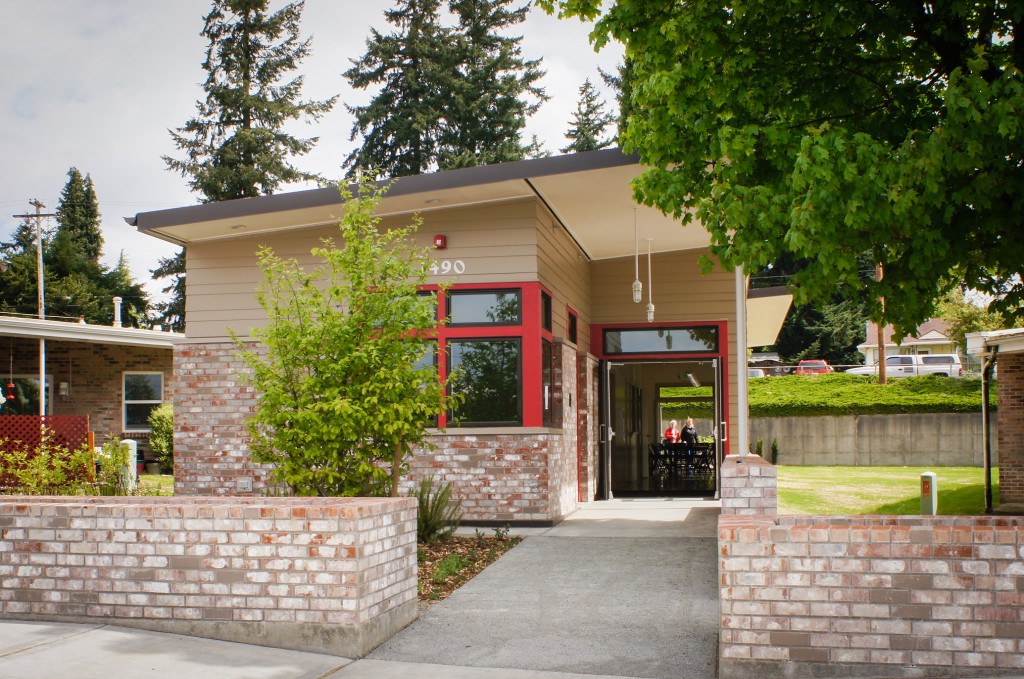Schemata Workshop is pleased to announce the completion of Hillcrest Terrace Community Building. Hillcrest Terrace is a senior housing community operated by Renton Housing Authority located in Renton, WA. The new Hillcrest building provides amenities for the surrounding apartment community that include a laundry room, kitchen, and dining space for up to 50 people. Residents of Hillcrest Terrace now have the ability to cook communal meals and host community events in the building.
The narrow site and its close proximity to the adjacent apartment buildings posed many design challenges that defined the building design, form, and fenestration locations. The design utilized a simplistic shed roof with overhangs and fenestration on the south exposure to capture light in the winter and provide adequate shading in summer.
The site encompasses a rose planter abutting the sidewalk for the senior residents to tend and enjoy. Previously the site housed a rose garden and two maple trees – one of which stayed in place and the other was relocated to the outdoor space east of the community building. The entrance sequence begins with a covered entry and seat wall facing west offering a place for the residents to enjoy the evening sun. Beyond the entrance is a narrow corridor illuminated by a series of skylights that lead to the dining room complete with a fire place and ample space for meals, card games, or simply visiting. The dining room also has a series of skylights and large windows that contribute to a light filled space. The Schemata team utilized the Integrated Design Lab for daylight studies and carefully located skylights and overhangs to decrease glare while maximizing natural light.
At the recent grand opening ceremony we were able to visit with the resident seniors and witness them using the community building and celebrating its completion.





